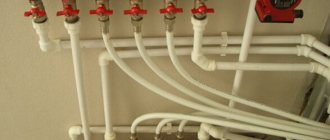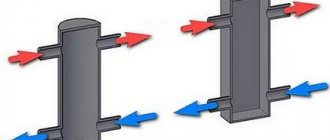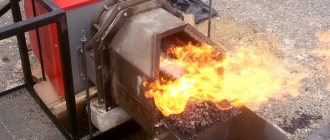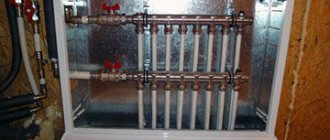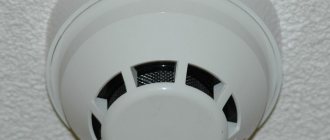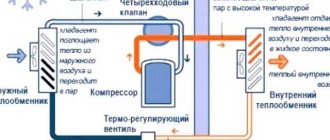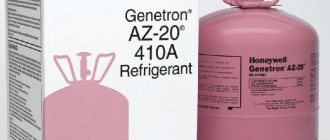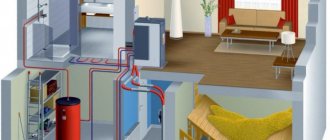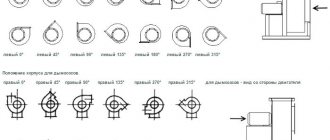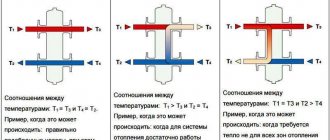How to use the table?
- We determine the type of freon in the system (look at the nameplate, valves or documentation)
- We measure the pressure in the system with a manometric manifold
- We look at the table for the temperature value for a given freon at this pressure
For example:
- refrigerant R22
- suction pressure 4.5 Bar, discharge 16 Bar
- accordingly, the freon evaporation temperature is +3.1 degrees C, the condensation temperature is +44.7 degrees. WITH
It is only necessary to measure the condensation pressure after the condenser, before the expansion valve or capillary tube, otherwise it will not correspond to reality.
Refueling based on pressure and overheating temperature
We would like to warn you right away that this method of adding freon is considered unreliable, although many refrigerators fill freon “by eye”, focusing only on pressure. The best and most correct charging method is to completely replace the refrigerant by draining the system and filling it by weight, as described in our manual.
In addition to the thermometer and gauge manifold, you will need:
- hex and open-end wrenches;
- electronic scales (kitchen scales will do);
- freon of the required brand (indicated on the plate of the external unit).
Important point. Different types of refrigerants have different physical properties. There is no concept of interchangeability or compatibility of these liquids as such; only the gas indicated on the nameplate of the refrigeration unit will do. In household air conditioners, grades R22 and R410a are used, in cars - 134th freon.
First of all, make sure there are no leaks, otherwise you risk wasting time and effort. When refueling, follow the instructions:
- Connect the hose from the LP gauge to the service port and the yellow middle tube to the gas cylinder according to the diagram below.
- Open the cylinder valve and purge the air from the hoses by briefly opening the high pressure tap (on the right side of the manifold).
- Place the container with the refrigerant on the scales and reset the readings to zero. When filling with R410a freon, the cylinder is placed upside down.
- Turn on the air conditioner for cooling and open the service valve, having first unscrewed the protective cap.
- When opening the LP tap (on the left at the pressure gauge station), release the freon into the circuit in small portions, literally 30 grams each. Use electronic scales as a guide.
- After pouring each portion, turn off the tap and measure the temperature of the gas pipe for 1-2 minutes. Serve next portion as needed. The task is to reduce overheating to normal 5-8 °C.
- Upon completion of refueling, close the valves of the manifold, service pipe and cylinder one by one.
Example. If previously the temperature of the gas main at a pressure of 5.4 Bar was +17 °C, the overheating reached 17 - 8 = 9 degrees (freon R22). This means that the tube needs to be cooled to + 14 °C in order to meet the standard.
The technology for refueling a split system based on overheating and pressure is described in detail in the video:
Temperature glide
At the moment, many types of refrigerants have been synthesized (more than 70 types), many of them are multicomponent and consist of parts with different physical properties.
For this reason, the temperatures during evaporation and condensation are different.
There are two scales for such freons:
- dew - to determine the condensation temperature
- bubble - to determine the evaporation temperature
For example:
- Freon R407c
- low pressure 4.5 Bar, high 16 Bar
- We determine the evaporation temperature on the bubble scale -1 deg. C, on the dew scale the condensation temperature +43.8 deg. WITH
What is freon and what are its properties?
Freons or freons are hydrocarbons that are actively used in various industries. They are mainly used in the manufacture of refrigeration units (refrigerators, air conditioners, freezers). For a long time, the word “freon” itself meant absolutely any refrigerants, but in fact, “ Freon ®” is the name of a specific patented hydrocarbon, the rights to which belong to the well-known American company DuPont. In the USSR, refrigerants were called in one word - freons.
In total, today there are about 50 types of refrigerants with specific properties and areas of application. This article will consider those that are used in the operation of air conditioners. First, let's find out what properties they have.
Physical properties
The most important property of freons, which makes it possible to use them in the production of refrigeration units, is the ability to absorb and release heat from the environment. Freons are usually colorless and odorless gases or liquids. They are characterized by good solubility in non-polar organic solvents and are almost insoluble in water.
Chemical properties
Freons are inert chemicals, so they are not flammable or explosive. But if you heat some of their types to 250⁰C, the poisonous gas phosgene COCl2 will be released.
How does freon affect the ozone layer?
Those freons that contain chlorine and bromine are extremely harmful to the Earth's ozone layer. In addition, freons contribute to the development of the greenhouse effect on our planet. Such negative results from the production and use of these substances led in 1987 to the Montreal Protocol banning the production of “harmful” freons, and their manufacturers were required to switch to less harmful production. In the USA and Europe, R-22 freon became prohibited in 2010, in Russia - since 2015.
Now there is a tendency towards a complete transition to environmentally friendly production of freons, for example, such as R410a and R32a.
Programs for determining the t/P relationship
At the moment, many manufacturers of refrigeration equipment and refrigerants have released convenient applications for phones on different operating systems (including iPhone).
They are more convenient to use, as they have an interactive scale that imitates the popular “refrigerator ruler” and also allow you to enter the exact value from the keyboard.
Their database includes more than 70 types of refrigerants produced at the moment.
You can get acquainted with the most popular of them and download them in this article.
How to understand if there is a freon leak from the refrigerator
It is clear that this substance is one of the main components of the proper operation of equipment. Freon leakage leads to equipment breakdown and inability to use it for its intended purpose. The most common cause of this problem is damage to the evaporator pipe or a manufacturing defect. Because it is a volatile, odorless gas, it cannot be detected by the olfactory receptors.
However, there are some signs that can help you identify a leak. The freon in the refrigerator is under pressure, and when the evaporator tubes are damaged, it gradually begins to fall. As a result, the air temperature in the refrigerator and freezer increases, and the food begins to quickly deteriorate. This is the first sign that it is necessary to check the integrity of the cooling system of the device. As mentioned earlier, freon is not dangerous for humans at temperatures no higher than 250 degrees, and it is impossible to heat it to such a temperature at home.
Table pressure temperature for freons
| t °C | R22 | R12 | R134 | R404a | R502 | R407c | R717 |
| -70 | -0,81 | -0,88 | -0,92 | -0,74 | -0,72 | — | -0,89 |
| -65 | -0,74 | -0,83 | -0,88 | -0,63 | -0,62 | — | -0,84 |
| -60 | -0,63 | -0,77 | -0,84 | -0,52 | -0,51 | -0,74 | -0,78 |
| -55 | -0,49 | -0,69 | -0,77 | -0,35 | -0,35 | -0,63 | -0,69 |
| -50 | -0,35 | -0,61 | -0,70 | -0,18 | -0,19 | -0,52 | -0,59 |
| -45 | -0,2 | -0,49 | -0,59 | -0,11 | -0,14 | -0,34 | -0,44 |
| -40 | 0,05 | -0,36 | -0,48 | 0,32 | 0,30 | -0,16 | -0,28 |
| -35 | 0,25 | -0,18 | -0,32 | 0,68 | 0,64 | -0,06 | -0,24 |
| -30 | 0,64 | 0,00 | -0,15 | 1,04 | 0,98 | 0,37 | 0,19 |
| -25 | 1,05 | 0,26 | -0,06 | 1,53 | 1,45 | 0,75 | 0,55 |
| -20 | 1,46 | 0,51 | 0,33 | 2,02 | 1,91 | 1,12 | 0,90 |
| -15 | 2,01 | 0,85 | 0,67 | 2,67 | 2,53 | 1,64 | 1,41 |
| -10 | 2,55 | 1,19 | 1,01 | 3,32 | 3,14 | 2,16 | 1,91 |
| -5 | 3,27 | 1,64 | 1,47 | 4,18 | 3,94 | 2,87 | 2,6 |
| 0 | 3,98 | 2,08 | 1,93 | 5,03 | 4,73 | 3,57 | 3,29 |
| 5 | 4,89 | 2,66 | 2,54 | 6,11 | 5,73 | 4,43 | 4,22 |
| 10 | 5,80 | 3,23 | 3,14 | 7,18 | 6,73 | 5,28 | 5,15 |
| 15 | 6,95 | 3,95 | 3,93 | 8,52 | 7,97 | 6,46 | 6,36 |
| 20 | 8,10 | 4,67 | 4,72 | 9,86 | 9,20 | 7,63 | 7,57 |
| 25 | 9,5 | 5,39 | 5,71 | 11,5 | 10,70 | 9,14 | 9,12 |
| 30 | 10,90 | 6,45 | 6,70 | 13,14 | 12,19 | 10,65 | 10,67 |
| 35 | 12,60 | 7,53 | 7,93 | 15,13 | 13,98 | 12,45 | 12,61 |
| 40 | 14,30 | 8,60 | 9,16 | 17,11 | 15,77 | 14,25 | 14,55 |
| 45 | 16,3 | 10,25 | 10,67 | 19,51 | 17,89 | 16,48 | 16,94 |
| 50 | 18,30 | 11,90 | 12,18 | 21,90 | 20,01 | 18,70 | 19,33 |
| 55 | 20,75 | 13,08 | 14,00 | 24,76 | 22,51 | 21,45 | 22,24 |
| 60 | 23,20 | 14,25 | 15,81 | 27,62 | 25,01 | 24,20 | 25,14 |
| 70 | 29,00 | 17,85 | 20,16 | — | 30,92 | — | 32,12 |
| 80 | — | 22,04 | 25,32 | — | — | — | 40,40 |
| 90 | — | 26,88 | 31,43 | — | — | — | 50,14 |
| t °C | R410a | R507a | R600 | R23 | R290 | R142b | R406a |
| -70 | -0,65 | -0,72 | — | 0,94 | — | — | — |
| -65 | -0,51 | -0,61 | — | 1,48 | — | — | -0,94 |
| -60 | -0,36 | -0,50 | — | 2,12 | — | — | -0,9 |
| -55 | -0,22 | -0,32 | — | 2,89 | — | — | -0,83 |
| -50 | 0,08 | -0,14 | — | 3,8 | — | — | -0,8 |
| -45 | 0,25 | -0,02 | — | 4,86 | — | — | -0,66 |
| -40 | 0,73 | 0,39 | -0,71 | 6,09 | 0,12 | — | -0,62 |
| -35 | 1,22 | 0,77 | -0,62 | 7,51 | 0,37 | — | -0,4 |
| -30 | 1,71 | 1,15 | -0,53 | 9,12 | 0,68 | — | -0,2 |
| -25 | 2,35 | 1,67 | -0,38 | 10,96 | 1,03 | — | -0,1 |
| -20 | 2,98 | 2,18 | -0,27 | 13,04 | 1,44 | — | 0,2 |
| -15 | 3,85 | 2,86 | -0,18 | 15,37 | 1,91 | — | 0,4 |
| -10 | 4,72 | 3,54 | 0,09 | 17,96 | 2,45 | 0 | 0,8 |
| -5 | 5,85 | 4,42 | 0,33 | 20,85 | 3,06 | 0,22 | 1,1 |
| 0 | 6,98 | 5,29 | 0,57 | 24 | 3,75 | 0,47 | 1,6 |
| 5 | 8,37 | 6,40 | 0,89 | 27,54 | 4,52 | 0,75 | 2,1 |
| 10 | 9,76 | 7,51 | 1,21 | 31,37 | 5,38 | 1,08 | 2,6 |
| 15 | 11,56 | 8,88 | 1,62 | 35,56 | 6,33 | 1,46 | 3,3 |
| 20 | 13,35 | 10,25 | 2,02 | 40,11 | 7,39 | 1,9 | 4,0 |
| 25 | 15,00 | 11,94 | 2,54 | 45,03 | 8,55 | 2,38 | 4,8 |
| 30 | 16,65 | 13,63 | 3,05 | — | 9,82 | 2,94 | 5,7 |
| 35 | 19,78 | 15,69 | 3,69 | — | 11,21 | 3,55 | 6,7 |
| 40 | 22,90 | 17,74 | 4,32 | — | 12,73 | 4,25 | 7,8 |
| 45 | 26,2 | 20,25 | 5,09 | — | 14,38 | 5,02 | 9,1 |
| 50 | 29,50 | 22,75 | 5,86 | — | 16,16 | 5,87 | 10,4 |
| 55 | — | 25,80 | 6,79 | — | 18,08 | 6,81 | 11,9 |
| 60 | — | 28,85 | 7,72 | — | 20,14 | 7,85 | 13,6 |
| 70 | — | — | 9,91 | — | 24,72 | 10,23 | 17,3 |
| 80 | — | — | — | — | 29,94 | 13,07 | 21,5 |
| 90 | — | — | — | — | 35,82 | 16,4 | — |
Features of 410 refrigerant
Freon R410a is not an azeotropic gas. It is a mixture of two refrigerants in the following proportions:
- R125, C2F5H (pentafluoroethane) – 50%;
- R32, СF2H2 (difluoromethane) – 50%.
An azeotropic mixture is a mixture of two or more liquids, the composition of which does not change when boiling, that is, a mixture with equal compositions of the equilibrium liquid and vapor phases.
Wikipedia
But the properties of the refrigerant are very close to an azeotropic mixture. Therefore, if it leaks, it is not always necessary to completely change the freon. Depending on the system, if leaks reach 20-60%, the equipment can be refueled.
Compared to R22, R410A refrigerant has 50% greater cooling capacity. For full operation of the system, 33% less of it is needed. at the same time its operating pressure is higher. the difference between the vapor pressure of R22 and R410a depends on the temperature.
At high temperatures (more than 25 °C) it can be 60% or more. Due to this, the system must have stronger walls of the evaporator and condenser tubes. This is achieved either by a larger diameter or greater wall thickness. Due to the larger amount of copper used, the equipment is more expensive.
Unlike R22, R410a refrigerant does not completely dissolve in mineral oils. The equipment is filled with polyester synthetic refrigeration oils, such as:
- Bitzer BSE;
- Suniso SL;
- Mobil EAL Arctic;
- Planetelf.
Mobil EAL Arctic 68 synthetic refrigeration oil
FAQ about boilers and heating
| t °C | R22 (CF2Cl2) | R12 (CF2CCl2) | R134a (CH2FCF3) | R404a (R125/R143a/R134a) | R502 (R22/R115) | R407c (32/125/134a) | R717 NH3 (amonia) | R410a (32/125) | R507a |
| -70 | -0,81 | -0,88 | -0,92 | -0,74 | -0,72 | — | -0,89 | -0,65 | -0,72 |
| -60 | -0,63 | -0,77 | -0,84 | -0,52 | -0,51 | -0,74 | -0,78 | -0,36 | -0,50 |
| -50 | -0,35 | -0,61 | -0,70 | -0,18 | -0,19 | -0,52 | -0,59 | 0,08 | -0,14 |
| -40 | 0,05 | -0,36 | -0,48 | 0,32 | 0,30 | -0,16 | -0,28 | 0,73 | 0,39 |
| -30 | 0,64 | 0,00 | -0,15 | 1,04 | 0,98 | 0,37 | 0,19 | 1,71 | 1,15 |
| -20 | 1,46 | 0,51 | 0,33 | 2,02 | 1,91 | 1,12 | 0,90 | 2,98 | 2,18 |
| -10 | 2,55 | 1,19 | 1,01 | 3,32 | 3,14 | 2,16 | 1,91 | 4,72 | 3,54 |
| 0 | 3,98 | 2,08 | 1,93 | 5,03 | 4,73 | 3,57 | 3,29 | 6,98 | 5,29 |
| 10 | 5,80 | 3,23 | 3,14 | 7,18 | 6,73 | 5,28 | 5,15 | 9,76 | 7,51 |
| 20 | 8,10 | 4,67 | 4,72 | 9,86 | 9,20 | 7,63 | 7,57 | 13,35 | 10,25 |
| 30 | 10,90 | 6,45 | 6,70 | 13,14 | 12,19 | 10,65 | 10,67 | 16,65 | 13,63 |
| 40 | 14,30 | 8,60 | 9,16 | 17,11 | 15,77 | 14,25 | 14,55 | 22,90 | 17,74 |
| 50 | 18,30 | 11,90 | 12,18 | 21,90 | 20,01 | 18,70 | 19,33 | 29,50 | 22,75 |
| 60 | 23,20 | 14,25 | 15,81 | 27,62 | 25,01 | 24,20 | 25,14 | — | 28,85 |
| 70 | 29,00 | 17,85 | 20,16 | — | 30,92 | — | 32,12 | — | — |
| 80 | — | 22,04 | 25,32 | — | — | — | 40,40 | — | — |
| 90 | — | 26,88 | 31,43 | — | — | — | 50,14 | — | — |
The relative pressure is indicated in bar.
R22. according to Du Pont de Nemours R404a. according to Elf Atochem R507. according to ICI Rest. according to the “Textbook on Refrigeration Engineering” Pohlman Chlorofluorocarbonate (bp 51.4°C). Freon R410A (Formula CHClF2) Trichlorofluoromethane (bp 23.8 °C). Freon R 11, Freon-11, Freon-11 Difluorodichloromethane (bp -29.8 °C). Freon R 12, Freon-12, Freon-12 Trifluorochloromethane (bp -81.5 °C). Freon R 13, Freon-13, Freon-13 Tetrafluoromethane (boiling point -128 °C). Freon R 14, Freon-14, Freon-14 Tetrafluoroethane (bp -26.3 °C). Freon R 134a, Freon-134a, Freon-134a Chlorodifluoromethane (boiling point -40.8 °C). Freon R 22, Freon-22, Freon-22 Chlorofluorocarbonate (boiling point -51.4 °C). Freon R407C, Freon-R410A, Freon-R410A Since 2004, Europe has completely switched to new ozone-safe refrigerants. To be more precise, in the coming season, European sellers will be able to sell the remains of R-22 equipment imported in 2003, but nothing more. Moreover, the sale of cold-only models using ozone-depleting freons was stopped a year earlier. Japan also switched to new refrigerants. How will this affect the Russian air conditioner market? In 2003, sales of split systems using new ozone-friendly refrigerants exceeded 7,000 units, representing less than 4% of total sales. Although for some brands it is higher. According to Daikin, the share of air conditioners based on R-407C and R-410A is about 8% of total sales, and for Panasonic. about 7% (Table 1.2).
For VRF class equipment, about 150 systems or 15% of total sales were delivered to R-407C. In terms of indoor units, this amounts to about 1,200 units. The total doesn't add up to much. In 2003, HCF equipment reached only 3% of premises.
And this despite the fact that all leading suppliers are ready to supply air conditioners using both R-22 and HCF refrigerants. However, companies involved in the retail sale of equipment are not yet in a hurry to change their habits. Why?
Let's compare existing refrigerants according to several fundamental points (Table 3).
| Domestic | ||
| Daikin | 230 | 730 |
| M.E. | 120 | 120 |
| Gree | 50 | 50 |
| Total | 400 | 900 |
Table 1. Sales of split systems of all types using R-407C in 2003
Unlike traditional refrigerants, R-407C and R-410A are mixtures of various freons, and therefore are less convenient to use. Thus, R-407C, created as an alternative to R-22, includes three freons: R-32 (23%), R-125 (25%) and R-134a (52%). Each of them is responsible for providing certain properties: first . helps increase productivity, second. excludes fire, third. determines the operating pressure in the refrigerant circuit.
| R-407C | R-410A | ||
| Isotropy (possibility of refilling the air conditioner in case of leakage) | Yes | No | Yes |
| Oil | mineral | polyester | polyester |
| Pressure at condensation temperature +43°C | 16 atm. | 18 atm. | 26 atm. |
| Price per kilogram USD | 4,8 | 29,4 | 32,7 |
Table 3.
This mixture is not isotropic, and therefore in case of any refrigerant leaks, its fractions evaporate unevenly and the optimal composition changes. Thus, if the refrigeration circuit depressurizes, the air conditioner cannot simply be refilled; The remaining refrigerant must be drained and replaced with new one. This was the main obstacle to the spread of R-407C.
In addition, it is environmentally friendly. in practice may lead to additional burden on the environment. Freon evacuated from air conditioners must be disposed of, but in Russia or Asian countries no one will mess with this. They will simply leave him in the nearest gateway. And, although R-407C is not dangerous for the ozone layer, it is one of the most powerful greenhouse gases.
Refrigerant grade R-410A, consisting of R-32 (50%) and R-125 (50%) is conditionally isotropic. That is, if there is a leak, the mixture practically does not change its composition, and therefore the air conditioner can simply be refilled. However, R-410A is not without some disadvantages. Unlike R-22, which is highly soluble in ordinary mineral oil, the new refrigerants require the use of synthetic polyester oil. What does this mean in practice?
Polyester oil has one very significant drawback. it instantly absorbs moisture, losing its properties. Moreover, during storage, transportation and refueling, it is necessary to exclude not only the ingress of dripping moisture, but also contact with moist air, from which the oil actively absorbs water. In addition, it does not dissolve any petroleum products or organic compounds that become potential contaminants. All this does not significantly change the installation process, but will require special attention to some technological operations. In particular, for evacuation you need a two-stage pump capable of providing a vacuum of up to 42 atm. and a corresponding pressure gauge. When soldering, the pipes must be filled with an inert or chemically inactive gas with a low moisture content, for example, nitrogen, and the refrigerant can be refilled exclusively in the liquid phase.
R-410A climate control equipment with the same performance is a little more expensive. Reason. at higher operating pressure. So, at a condensation temperature of +43°C, for R-22 it is about 16 atm, and for R-410A. about 26 atm. For this reason, all components and parts of the refrigeration circuit charged with R-410A, including the compressor, must be more durable. This does not significantly increase copper consumption, but still increases the cost of the system.
Ozone-friendly refrigerants themselves are more expensive than traditional ones. So, for a kilogram of R-410A you will have to pay 7 times more than for a kilogram of the usual R-22. Slightly cheaper than R407C, to which semi-industrial equipment is being actively converted. There will be a 6-fold difference, and taking into account the fact that in case of any leak it must be drained, the actual costs for freon will increase slightly. It should also be taken into account that as the operating pressure increases, the number of leaks will inevitably increase, since the strength of the solder joints remains the same.
It is for these reasons that regional companies are in no hurry to switch to ozone-friendly refrigerants. Given the opportunity to choose between R-410A and R-22, regional companies in 90% of cases will work with air conditioners using the more familiar and cheaper freon. If only because they were not prepared for the transition to R-410A, either morally or technically. However, sooner or later this will have to be done. There are several reasons for this.
Firstly, almost all new models from the world's leading manufacturers are developed only using ozone-safe freons, since R-410A is the most advanced refrigerant today (COP reaches more than 4). This means that in 2.3 years there will inevitably be a noticeable technological gap between HCF and R-22 equipment, and selling outdated equipment is always difficult.
Secondly, already in 2004 all European warehouses will be filled with equipment using new refrigerants. Since R-22 will be imported only to the CIS countries and Turkey, in the event of a shortage of equipment, distributors from these countries will be forced to obtain equipment from HCF, since it is unrealistic to quickly deliver goods from anywhere in China. Thus, dealers will be faced with a choice: either work with R-410A, or be left without equipment and without customers. Moreover, every year Russian distributors will, on their own initiative, reduce the share of R-22 equipment, since in the event of a cold summer and the impossibility of fulfilling the plan, it cannot be transferred to European stocks.
Thirdly, the factories supplying semi-industrial air conditioners Daikin, ME, Hitachi and Toshiba to the Russian market are located in Europe. Therefore, already in 2004, a significant part of the packages for these brands. will be supplied in R-410A and R-407C. Considering the share of the first two brands in the Russian PAC market, it can be argued that almost any company will be forced to have the tool necessary to work with HCF. It is worth considering that the main consumers of packages. . large corporate clients, the most interesting and solvent customers.
Fourthly, even if the company does not intend to sell air conditioners using new refrigerants, sooner or later it will be faced with the need to service HCF equipment installed by colleagues at a promising customer that has appeared on the horizon. For this reason, few people want to lose a major client who is ready to sign a service agreement.
All the above considerations can be summarized with a Russian proverb: “prepare the sleigh in the summer, and the cart.” in winter.. One way or another, you need to prepare for working with HCF refrigerants now, otherwise already in the 2004 season you may encounter some of the problems described above.
Advantages of R410a over R22 R410a Comparison of R22 and R410a refrigerants Bristol compressors
